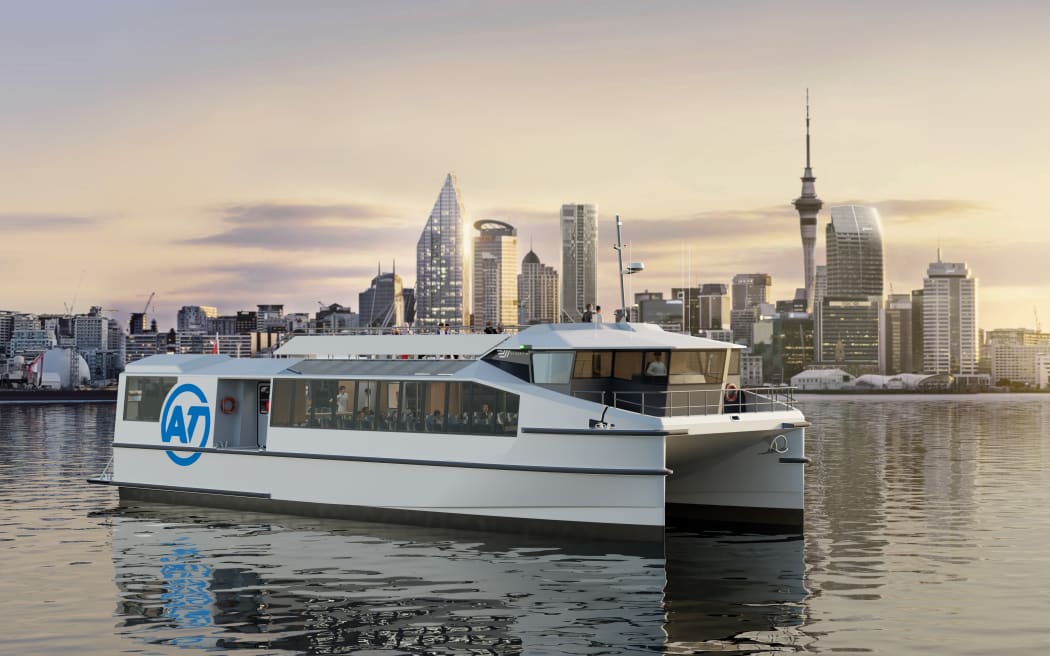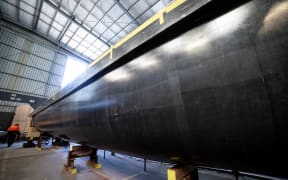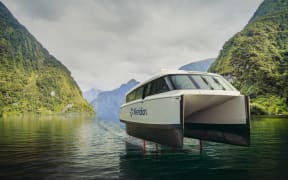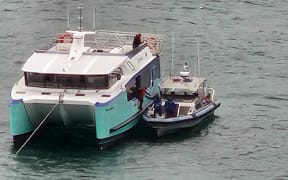
EV Maritime has been commissioned to build the low emission fleet for Auckland Transport. Photo: Supplied
Maritime operators have been discussing ways for Auckland's ferry network to reach zero emissions at a conference in the city.
The New Zealand Maritime Transport Association conference brought together maritime industry representatives - from public transport operators to boat builders
High on the agenda was discussions about how Auckland's ferries would deal with the challenges of new technology to become more environmentally friendly.
The world's first fully electric ferry, Ika Rere, has been operating in Wellington for two years but further north, Auckland's ferry fleet was old and still used diesel.
Next year, that will change, with Auckland Transport building four electric boats to service inner and mid-harbour routes.
Project manager for the low emission fleet, Nathan Cammock, said it will take around a decade to replace the current fleet.
"For Auckland if we want to move away from diesel ferries, we've got to put charging infrastructure in around our city."
Auckland's ferries make up 6 percent of the cities public transport passengers, but 20 percent of public transport greenhouse gas emissions.
Cammock said fast chargers will be the key to improving ferry services.
"One of the things we're trying do is fast charging for the ferries, and that will allow us to keep the frequency that passengers enjoy at the moment, and on some of the routes where we have reduced frequency, having more boats will help us bring that back to where they were."
But Cammock said installing charging stations was a challenge and was costing more than expected.
"The charging infrastructure is a big up front investment, with one charger then supporting one, two, three, four more ferries with a single charger, the challenge is we need to get the chargers in first so the ferries can operate."
They were also investing in refitted diesel ferries to help aid the reliability issues that have plagued ferry commuters.
"We've got an immediate need now for more passenger capacity and more reliability on some of our routes, so diesel refits will help that."
Auckland's ferry operator Fullers 360 said electric alone would not be enough to lower emissions across the network.
Chief Executive Mike Horne said electric was great for inner-harbour routes, such as the city to Devonport, but for longer travel - to Gulf Harbour for instance, hydrogen-powered boats were better.
"The reality is electric vehicles are terrific for short trips. We have the grid electricity in place, which is what Auckland Transport is putting in place, and you can recharge it each end and you can run all day on electric, happily," he said.
"Hydrogen is really stored energy, so you can go further, without having to refuel, so it opens up a whole range of other uses, which you can't do with electric."
But he said there were many hurdles to hydrogen technology - one of them was refuelling speed.
"The one in San Francisco two years was literally taking twelve hours to refuel. You can't do that in a network of commuters going backwards and forwards. You need it in twenty minutes."
Regulations posed another problem - currently, the industry has none for hydrogen powered vessels.
"The regulation for these things don't really exist anywhere in the world. So one of the challenges working with maritime new zealand to get the rules right to allow these things to happen."
Horne said hydrogen was also not yet commercially viable.
"Electric boats are highly highly commercial now. They don't require a government grant to get things up and underway, because they make money in their own right. Hydrogen isn't at that stage."
Horne said Fullers was also renting a hydrofoiling vessel to trial.
"The electric foiling boats a little one, to prove out the foiling, and then scale those up to a foiling hydrogen boat for Waiheke, Gulf Harbour, and all those other things."
Cammock said the focus for decarbonisation was ferries with shorter runs - it was a wait and see for how technology caught up for longer-running ferries.
"'At the moment we're very much focused on the inner and mid harbour. Hydrogen has some way to go until it's viable and cost effective, very must a wait and see."
Maritime New Zealand chief executive Kirsty Hewlett said her organisation was making efforts to keep up with new technology.
"We work really closely alongside some of the operators who are building these vessels, just to understand what they are trying to do, what other regulators are doing."
The conference winds up Friday, with delegates hoping they will come away with a better understanding of how new technology can drive the maritime industry into a low-emissions future.





